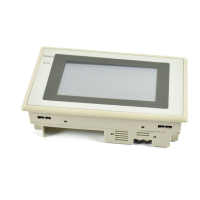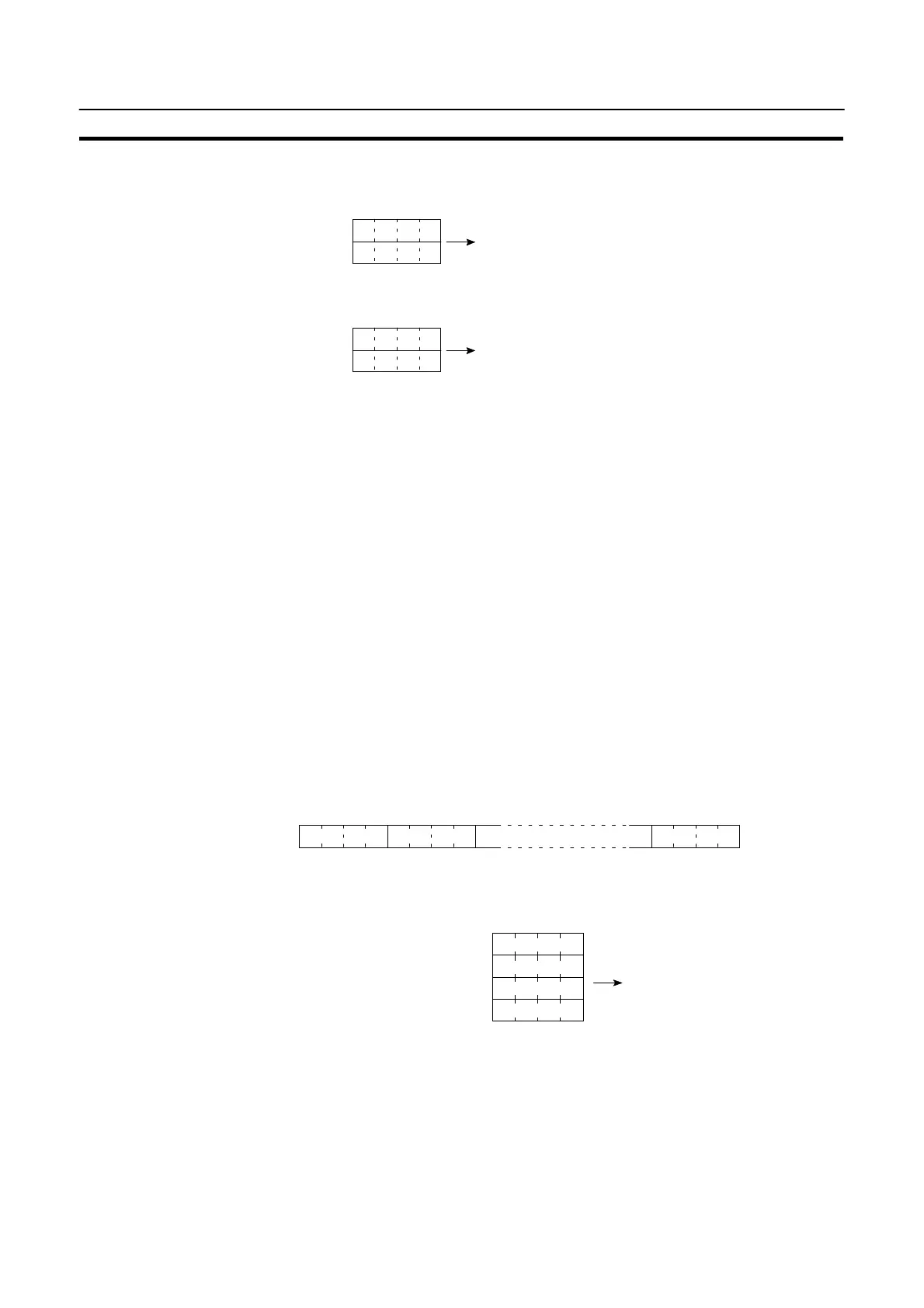168
Memory Tables and Bar Graphs
Section 5-2
[Numeral memory table display examples]
S When the data are numeral data (0 to 9)
Start
Start + 1
Decimal without sign 123456
Decimal with sign –123456
Hexadecimal F0123456
3456
F012
S When the data contain characters (A to F)
Start
Start + 1
Decimal without sign 123B56
Decimal with sign –123B56
Hexadecimal F0123B56
3B56
F012
If the hexadecimal data (A to F) are stored when the decimal display has been set,
the alphabets are displayed.
If the number of display digits has been set to be smaller than the maximum num-
ber of digits of the registration words (4 digits for 1 word; 8 digits for 2 words), the
contents of the allocated words are not displayed and “
” symbols will be displayed
at all digits.
If the most significant digit is “F” when “decimal with signs” has been set, the nu-
meral is handled as a negative number. The maximum number of digits of the neg-
ative number becomes smaller than that of the positive number by 1 digit.
The actual display will vary according to the “zero suppress” setting and decimal
fraction setting as well as the contents mentioned above. Refer to the “NT-series
Support Tool Operation Manual” (V028-E1-j).
S Contents of the character-string memory table
A character string is stored in the allocated words beginning with the first word in
normal-size characters.
Two normal-size characters are stored in one word. One memory table can
store up to 16 words (32 characters).
Start Start + 1 Start + 15
Code 1 Code 2 Code 3 Code 4 Code31 Code32
[Character-string memory table display example]
To display the characters in order, allocate the characters as follows.
“A”=41H, “B”=42H Start
4748
4142
4344
4546
“ABCDEFGH”
“G”=47H, “G”=48H Start + 3
“E”=45H, “F”=46H Start + 2
“C”=43H, “D”=44H Start + 1

